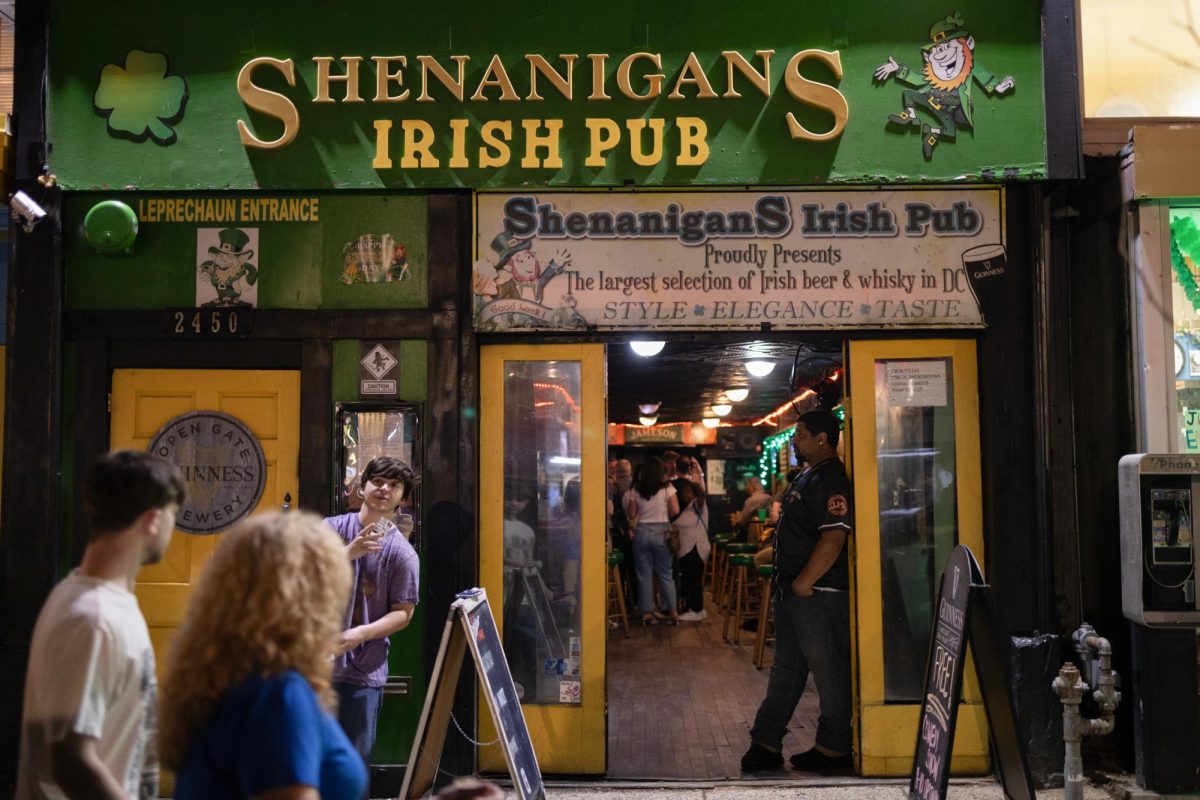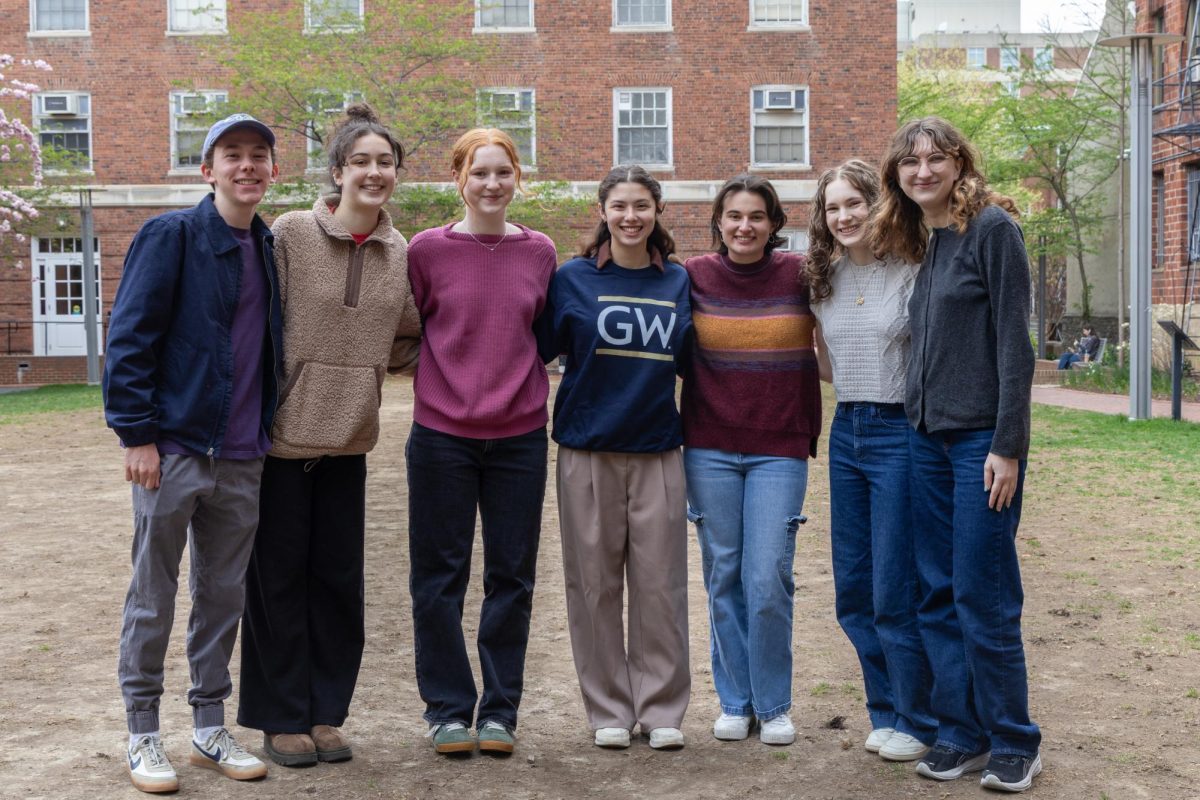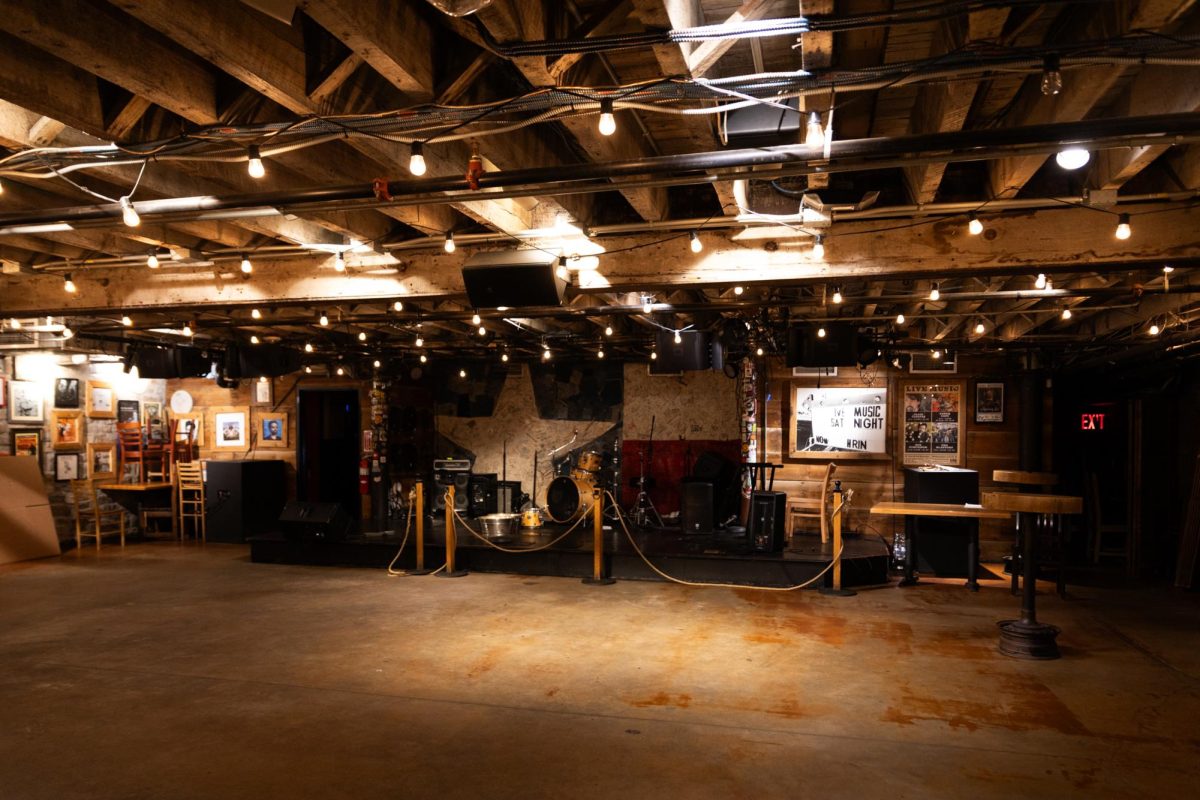After two years of renovations, the National Museum of Women in the Arts has reopened its galleries of art created exclusively by women and nonbinary artists.
Displaying six exhibits, expanded gallery space, improved accessibility features and a new library and research center, the museum reopened its doors Oct. 21. The $67.5 million project worked to ensure the longevity of the historic building that houses the museum’s collection.
“The National Museum of Women in the Arts brings recognition to the achievements of women artists of all periods and nationalities by exhibiting, preserving, acquiring and researching art by women and by teaching the public about their accomplishments,” said Emma Filar, the NMWA’s communications and marketing manager.
The relevance of NMWA has been a topic of conversation for many in the D.C. art scene, who wonder if a museum solely dedicated to female artists is necessary since the museum originally opened during a period when women were barely allowed in other galleries. Filar said the NMWA is still critical for promoting female voices in the arts both through its galleries and by serving as a space to facilitate conversation.
“NMWA continues to bear a responsibility to amplify women’s voices,” Filar said. “The museum’s singular stance has already made a difference in raising the discourse around gender inequality in the arts, and we are poised to make even greater strides in achieving equity in the future,” she added.
Just a block away from the Metro Center station, the building’s recognizable flatiron architecture is highlighted by the corner of New York Avenue it sits on. Walking in through the main doors, visitors are greeted by a grand ballroom with marble staircases framing either side of the room, chandeliers hanging from the ceiling and intricate tile work across the floor.
Structuring my visit in reverse, I began exploring the fourth floor and worked my way down to the first. Directly outside of the elevators on the fourth floor, visitors are met with one of the inaugural special exhibits, “Hung Liu: Making History.” The exhibit honors Liu, who passed away in 2021, and displays a series of portraits featuring distinct drips of paint, vivid colors and scenes of laborers in China.
The pieces were compelling; they didn’t give themselves up immediately. I was particularly intrigued by “La Ran-Butterfly,” which included small clay sculptures attached to a painting of a woman’s side profile, her pink earring and hairpiece standing out against the muted cream-colored background.
“‘Weeping’ paintings and prints by Hung Liu — featuring signature paint drips, layers of color and cultural symbols — pay homage to overlooked figures in history, predominantly vulnerable women and children from the artist’s native China,” Filar explained.
The fourth floor also houses “Impressive: Antoinette Bouzonnet-Stella,” another special exhibit featuring 25 engraved copperplates created for King Louis XIV in 1675. The plates depict a dramatic wartime scene from an Italian frieze, with men on horseback charging toward their foes yielding swords and shields.
Completely black and white, the texture in the piece comes from various types of shading. Neighboring LRC is another special exhibit, “Holding Ground: Artists’ Book for the National Museum of Women in the Arts.” “Holding Ground” showcases the work of book artists invited by the Betty Boyd Dettre Library and Research Center, based in the museum, to create works inspired by NMWA’s importance to them.
“We like to say we are both a museum and a megaphone, sharing the contributions of women artists but also calling for gender equality across the arts,” Filar said.
“The Sky’s the Limit” occupies much of the second floor and is perhaps the most daring of the four new special exhibits. The exhibit is a series of contemporary sculptures that expand past classic gallery frames and display pieces that suspend from the ceiling.
Featuring works by Sonya Clark, Beatriz Milhazes, Cornelia Parker, Mariah Robertson, Shinique Smith and Joana Vasconcelos, the exhibit’s intricate, large-scale sculptures like one of a woman sitting in a chair high on the wall with a dress and branches below her that stretch down to the ground were a stand-out of my visit. It’s not often that viewers get to see art from every angle, above and below.
“The contemporary sculptures in this exhibition dangle from the ceiling, cascade down walls and extend far beyond their footprint on the gallery floor,” Filar said about the pieces chosen for the exhibit. “They illuminate how artists use scale and the allure of materials for maximum impact.”
I spent a lot of time wandering the exhibit, circling each piece and noticing the drapery of the fabric in Alison Saar’s “Undone” or the placement of each wax-dipped silk flower in “Untitled #1273 (The Age of Innocence)” by Petah Coyne. The exhibit’s lighting casts shadows across the walls and floors, adding an extra layer to the already complex themes of each work.
The final special exhibit, “In Focus: Artists at Work,” is a documentary-style short film that details the processes of eight artists whose works are featured in NMWA. Located on the first floor, the film is meant to greet visitors as they enter the museum.
In between the special exhibits, scattered throughout each floor, are various galleries and collections. Guerrilla Girls’ witty posters advocating for space to be made in museums for women artists, Judy Chicago’s vibrant, geometric “lifesavers,” Faith Ringgold’s large-scale depiction of Josephine Baker and Niki de Saint Phalle’s iconic “Pregnant Nana” are showcased in these collections. These spaces exhibit works created by notable artists concentrating in different mediums but with a shared mission to create art that questions the traditional views of a patriarchal society.
Leaving the museum, I turned to take one last look at the grand ballroom. The museum’s open floor plan allows visitors to see to the second level, where my eyes were trained. I thought of the various portraits of women who frame the second-floor balcony — Frida Khalo, Louise Bourgeois, Wilhelmina Cole Holladay, the museum’s founder — and I felt a profound sense of empowerment and gratitude for a space that puts women artists in the spotlight.
The lack of space for women in the art scene makes NMWA special. It feels like a space that holds limitless possibilities for the future of women in art. While the relevance of the museum may still be a topic of debate, the expansive, mixed-media collection made NMWA’s goals of promoting female voices in the arts clear.







